Darmayenti, M.Pd., DR (kand.) - Dosen Jur. BSI
 Speech act as the action performed via utterance was developed firstly by John Austin and John Searle. In attempting to express them, people do not only produce utterances containing grammatical structures and words, they perform actions via those utterances. In this case, John Austin and John Searle developed speech theory from the basic belief that language is used to perform actions: thus, its fundamental insights focus on how meaning and action are related to language.
Speech act as the action performed via utterance was developed firstly by John Austin and John Searle. In attempting to express them, people do not only produce utterances containing grammatical structures and words, they perform actions via those utterances. In this case, John Austin and John Searle developed speech theory from the basic belief that language is used to perform actions: thus, its fundamental insights focus on how meaning and action are related to language.INTRODUCTION
John Searle expanded and incorporated speech act theory into linguistic theory. Searle’s work also rises important questions concerning (classification) of acts about which people know and the way that a single utterance can be associated with more than one act.
Searle has proposed some terms that are commonly used such as apology, complain, compliment, invitation, promise, or request. These descriptive terms for different kinds of speech acts apply to the speakers’ communicative intention in producing an utterance. The speaker normally expects that his or her communicative intention will be recognized by the hearer.
Although speech theory was not first developed as a means of analyzing discourse, some of its basic insights have been used by many scholars to solve problems basic to discourse analysis. In addition, particular issues in speech act theory lead to discourse analysis; how an utterance can perform more than one speech act at a time, and the relationship between context and illocutionary force.
Discourse is used for communication. People use utterances to convey information and to lead each other toward an interpretation of meanings and intentions. This role greatly increases the scope of discourse analysis, simply because on has to address how the language of the utterances is related to aspects of the communication process that bear an indirect relationship to language per se.
Related to the explanation above, in this article the writer will give explanation briefly the overview of the critical concepts and ideas introduced by both Austin (1962) and Searle (1969) and use the sample to discuss two different stages in the application of speech act theory to discourse analysis, how to identify utterances as speech act, how to analyze sequences of speech act, and explain how speech act approach to discourse. It is hoped that this explanation will give new concept to the readers.
CONCEPT OF SPEECH ACT THEORY
As stated earlier that the concept of speech theory begins with the work of John Austin whose ideas expanded and incorporated into linguistic theory by John Searle. In this case, the writer will clarify briefly the difference ideas of Austin and Searle in defining speech act theory.
Austin’s concept of Speech Act
Austin in 1962 who was famous for his book “How to Do Things with Words”, is widely acknowledged as the first presentation of what has come to be called speech act theory. Austin begins by noticing that some utterances that seem like statements lack what is thought to be necessary property of statements- a truth value. Not only do such statements not “describe or report” anything, but the uttering of the sentence is, or is a part of, the doing of an action, which again would not normally be described as or as just, saying something. Austin calls these as performatives and distinguishes them from constantives, such as declarative statement whose truth or falsity can be judged (Austin in Schiffirin, 1994:53). It means that Austin tries to compare the utterances that are related to performative and constantive. Performative utterances can be seen as follows:
I do (take this woman to be my lawful wedded wife) - as uttered In the course of marriage ceremony.
I name this ship the Queen Elizabeth- as uttered when smashing the bottle against the stern.
I bet you sixpence it will rain tomorrow.
The examples given all share several qualities. They all include a particular type of verb- a performative verb- that realizes a particular action (the action that the verb “names” when uttered at the specific context. Such a context can include setting (a marriage ceremony), physical objects (a ship). Austin states that performative utterance requires not only “the appropriate circumstances but also the appropriate language: the performative verb “is present tense” and each sentence has a first subject and the adverb hereby may modify any of the verbs, (e.g. I hereby give….). In this case, it can be analyzed that performative verb still play a key role in Austin’s framework.
Yule (1996: 51) adds that one way to think about the speech acts being performed via utterances is to assume that underlying every utterance (U) there is a clause, containing a performative verb (Vp) which makes the illocutionary force explicit. This is known as the performative hypothesis and the basic format of the underlying clause is shown as follows: I hereby Vp you (that) U. In this clause, the subject must be first person singular (“I”), followed by the adverb ‘hereby’, indicating that the utterance “count as” an action by being uttered. There is also a performative verb (Vp) in the present tense and an indirect object in second person singular (you). This underlying clause will always make explicit and also implicit as the following examples:
Explicit Performative
I hereby order you that you clean up this mess.
I hereby tell you that the work was done by Elaine and myself
Implicit Performative
Clean this mess!
The work was done by Elaine and myself
Related to that concept, Yule also gives the explanation about the act that concern with the condition. There are certain expected or appropriate circumstances, technically known as felicity conditions, for performance of speech act to be recognized as intended. This case can be seen as example bellow:
I sentence you to six months in prison.
For some clear cases, the performative will be infelicity (inappropriate) if the speaker is not a specific person in a special context (in this case, a judge in a courtroom).
In everyday contexts among ordinary people, there are also preconditions on speech acts. There are general conditions on the participant that can understand the language being used and that they are not play-acting or being nonsensical. Then there are content conditions. It can be seen in promise and warning, the content of the utterance must be about a future event. The next is preparatory condition. The preparatory conditions for a promise are significantly different from for a warning. When the speaker promises to do something, there are two preparatory conditions: the event will not happen by itself, and the event will have a beneficial effect. Yule also adds that sincerity condition can be also included. In this case, sincerity condition is if the speaker does a promise and he believes that it isn’t clear that the future event will not have a beneficial effect. The last is the essential condition, which covers the fact that by the act of uttering promise, it can change the statement from non –informing of a bad future event to informing. This essential condition combines with a specification of what must be in the utterance content, the context, and the speaker’s intentions, in order for a specific speech act to be appropriately performed (Yule, (1996:50-51).
Based on the explanation above, it can be noted that performatives meet certain contextual (what makes an utterance true and appropriate) and textual conditions (how what is said conveys what is done). It can be seen that the contextual conditions for performatives are not different in kind from those for constantives. It can be concluded that performative utterance as declarative that do an action has the truth conditions, while constatives are declarative whose truth could be judged. It can be seen as the following examples:
I apologize to her for coming late.
I promise to be there.
Those statements imply the truth of a certain condition, e.g. it is true, not false that I am committed to doing something subsequently. I promise to be there, but not really intending to be there. In this case, that constantive and performative distinction cannot be maintained because both constantive and performative involve truth and falsity; both are felicitous or infelicitous in relation.
The writer notes that Austin segments the speech act itself into component acts- only one act of which is the act typically spoken of speech act theory. Three acts underlie the issuing of an utterance. A locutionary act involves the uttering of an expression with sense and reference “the act of saying something” using sound and words with meaning. An illocutionary act is the act performed” in saying the locution. This act initially viewed as performative. The last is perlocutionary act is the “consequential effects of utterance on an interlocutor. Of these three dimensions, the most discussed is illocutionary act. Indeed, the term “speech act” is generally interpreted quite narrowly to mean only the illocutionary act of an utterance.
Related to the explanation above, it can be concluded that Austin analyzes the speech act from performative utterance into illocutionary act.
Searle’ concept of Speech Act
As stated above that Austin analyzes the utterance from performative utterance into illocutionary act. However, in this case, Searle tries to analyze the utterance form different perspective. Searle (1969:21) resists the idea that conversation is governed by constitutive rules. In this case, Searle proposes that the speech act is the basic unit of communication. This view places speech act at the very crux of the study of the language, meaning, and communication.
Thus, viewing speech acts as the basic unit of communication allows Searle to explicitly associate speech act with the study of language: its production, its interpretation; meaning (both speaker meaning and linguistics meaning); there are a series of analytic connections between the notion of speech acts, means, what the speaker means, what the sentence (linguistic element) uttered means, what the speaker intends, what the hearer understand, and what the rules governing the linguistic elements are.
Based on the explanation above, it can be noted speech acts are part of linguistic competence: language can be used for speech act because people share rules that create the acts that say what is meant. Searle observes that “speaking a language is engaging in a rule-governed from form of behavior”. The rule that is responsible for speech acts is constitutive. It means that constitutive rules “create or define new forms of behavior”. In contrast to regulative rules is that regulate independently existing forms of behavior. The forms of the two types of rules reflect their different status: regulative rules are expressed as imperatives, but constitutive rules are more definitional.
Searle’s rules and conditions for speech draw upon both context and text. Searle classifies condition and rules according to their necessity for the act. In this case, Searle classifies different kinds of conditions and rules according to what aspect of text and context is focused upon in the condition or rule.
Furthermore, Searle’s ideas and Austin has the same concept on utterance. The uttering of words (morpheme and sentences) is an utterance act. Referring and predicating are propositional acts. Acts like stating, questioning, commanding, and promising are illocutionary acts. Illocutionary acts are what are constituted by the rules note above. In addition, they have a name, and they are what the speaker(S) is doing, in relation to the hearer (H) with words. The consequences of illocutionary acts (the effects on action, thought, beliefs of hearers) are perlocutionary acts.
In analyzing the utterance, Austin’ framework focuses on performative verb, while Searle focuses on subject to the condition and rule. Here, Searle presents the rules for requests, assertions, questions, thanks, advising, warnings, greetings, and congratulating. Propositional content conditions or rules are most textual. It means that they concern with reference and predication of a future act by the speaker. Preparatory conditions or rules are varied; they seem to involve background circumstances and knowledge about S and H that must hold prior to the performance of the act. In this case, the preparatory condition for promise, for example, concerns H’s preference about S’s doing of an act (A). Consequently, each rule focuses only upon the textual content, preparatory rules focuses upon background circumstances, the sincerity rule upon S’s psychological state, and the essential rule upon the illocutionary point what is said. Searle finds that different conditions or rules are more or less crucial to the non defective performance of an act (1969:54).
In sum, Searle places the speech act at the center of the study of language, meaning, and communication: he proposes that “the basic unit of human linguistic communication is the illocutionary act (Searle: 1979:1). It can be analyzed the semantic structure of a language may be regarded as conventional realization of series of sets of underlying constitutive rules and speech acts are the acts characteristically performed by uttering expressions in accordance with these sets of constitutive rules. So, utterances performed different acts because of their “circumstances” (Austin) and because of the knowledge that we have of the conditions and rules that constitute particular acts (Searle).
Classification of Acts
As stated above, Austin and Searle have different view in speech acts: Austin focuses upon the performative verb while Searle focuses upon the rules. In this case, Searle elaborates the classification of acts into five classes. He argues that Austin’s taxonomy does not maintain a clear distinction between illocutionary verbs and acts; nor are the categories based on consistently applied principles. Searle proposes five classes of speech acts. Those are representative (e.g. asserting), directives (e.g. requesting), commissives (e.g. promising), expressive (e.g. thanking), and declarations (e.g. appointing).
The most important principles are those that differentiate the five major categories of speech acts. The first principle concerns the illocutionary point the act. The illocutionary point directives (e.g. requests, orders, challenges, and dares) are to get H to do A. The illocutionary point of commissives (e.g. promises) is that they commit the speaker to some future course of action. The second principle is the way that words are fit to the world. Both commisives and directives are built upon a world to words fit. The third principle is the expressed psychological state: this derived from the sincerity condition. In contrast, the psychological state of directive is “want”; the psychological state of commisive is “intention”.
Searle defines the classification of speech acts. Declaratives are those kinds of speech acts that change the world via utterance. As an example “I pronounce you husband and wife”. Representatives are those kinds of speech act that state what the speaker believes to be case or not, for example, the earth is flat. In using a representative, the speaker makes words fit the word (belief). Expressive is speech act that states what the speaker feels like pleasure, pain, like, dislikes, joy, or sorrow. As an example” I am really sorry”. In using an expressive, the speaker makes words fit the world (of feeling). Directives are those kinds of speech acts that speakers use to get someone else to do something. In this case, they express what the speaker’s wants. They are command, orders, requests, suggestions; they can be positive or negative as the following example “could you lend me a pen, please? In using a directive, the speaker attempts to make the world fit the words (via the hearer). Commissives are those kinds of speech acts that the speakers use to commit themselves to some future action. They express what the speaker intends. They are promises, threats, refusal, and pledges as shown example: I will be back”. In using a commisive, the speaker undertakes to make the world fit the world (via speaker). (1979:5).
In addition, Searle also analyses that speech act has multiple function. It can be seen from the following example:
It is cold outside.
Actually that statement is a declarative utterance. However, it can change the meaning. It can be a request in an indirect speech act. So, a declarative used to make a statement is direct speech act, but a declarative used to make a request is indirect speech act.
In sum, speech acts can be classified into groups and subgroups by the principled of criteria. Communication relies upon shared knowledge of the name and type of a speech act: speaker and hearer share knowledge of how to identify and classify an utterance as a particular “type” of act, as a unit of language that produced and interpreted according to constitutive rules. He adds that there are a limited number of things that we do with language: we tell people how things are, we try to get them to do things, we commit ourselves to do things, we express our feeling and attitudes and we bring about changes through our utterances”. An utterance can do more than one thing at a time. Some utterances have multiple functions because one act is being performed by the way of another: these are called “indirect speech act”.
THE CONCEPT OF DISCOURSE ANALYSIS
In expressing the utterance speakers and hearers have to rely on more explicit structural mechanisms for the organization of their text. In this case, there are three functions that proposed by Sciffrin. In this expanded perspective, speakers or writers are viewed as using language not only in its interpersonal function (taking part in social interaction), but also in its textual function (creating well-formed and appropriate text), and also in its ideational function (representing though and experience in a coherent way). Investigating this much broader area of the form and function of what is said and written is called discourse analysis. So, discourse is the study of language use with reference to the social and psychological factors influence communication (Sciffrin, 1994: 20).
Schiffrin elaborates the concept of discourse into two paradigms namely, formal and functionalist paradigms. Two paradigms in linguistics provide different assumptions about the general nature of language and the goals of linguistics. These differences in paradigm also influence definitions of discourse: a definition derived from the formalist paradigm views discourse as “sentence”, a definition derived from the functionalist paradigm views discourse as “language use”(1994:20). Furthermore, this paper presents the concept of discourse in two paradigms.
As stated above, discourse is often defined in two ways: a particular unit of language (above sentence), and particular focus (on language use). These two definitions of discourse reflect the difference between formalist and functionalist paradigms. Hymes (1974:79) in Scriffrin (1994:21) suggests that the following contrast structural with functionalist approaches. In this case, formalist views that structure of language as grammar, while functionalist views structure of speech (act, event) as ways of speaking. In addition, Leech (1983:46) suggests other ways that formalism and functionalism are associated with different views of the nature of language. Chomsky is as a formalist tends to regard language primarily as a mental phenomenon. While Halliday is as a functionalist tends to regard it as a societal phenomenon. Formalist tends to explain linguistic universals as deriving from genetic linguistic inheritance of human species. Functionalists tend to explain linguistics as deriving from the universality of the uses to which language is put in human society.
Consequently, functionalism is based two general assumptions (a) language has functions that are external to the linguistic system itself; (b) external functions influence the internal organization of linguistic system.
In order to get the concept of discourse, as stated above, the writer will clarify about the definition of discourse. The classic definition of discourse as derived from formalist (Hymes in Sciffrin, 1994:23) assumptions is that discourse is “language above the sentence or above the clause. While Van Dijk (1985 in Sciffrin, 1994:24) states that discourse is a part of language. In many structural approaches, discourse is viewed as a level of structure higher than the sentence, or higher than another unit of text (Harris, 1951 in Sciffrin). Harris viewed discourse analysis procedurally as a formal methodology, derived from structural methods of linguistic analysis.
Consistent with the definition of discourse as language “above the sentence”, many contemporary structural analysis of discourse view the sentence as the unit of which discourse is comprised. However, several problems stem from reliance of definitions and analyses on the smaller unit of “sentence.” This concept can be seen as the following examples:
A Speaker: Are you free for lunch today?
Hearer: I have to go the hospital.
B You are free for lunch today?
Free fro lunch today?
Lunch today?
Related to the examples above, it can be seen that discourse is as above the sentence. It means that, if the sentence part A is analyzed, it can be an interrogative sentence because it can be analyzed through the form of the sentence.
However, the second sentence shows that this process need not always seem so automatic, simply because it is not always easy to find exactly those criteria allow utterance to be identified as questions. It can be identified that the sentence above as a structure because we know the units of which it is comprised (“question, answer”), we know their relationship to one another (the question opens a proposition that the answer fills), and we know the order in which they must occur (question before answer). But how is it that we actually identify (a) as a question? What is the background knowledge that allows us to hear or read the string of words and come up with a way of identifying questions? So, it can be concluded that the identifying structural constituents of discourse is often difficult task because we should also consider the intonation. It means that in analyzing the utterances, we do not only consider the syntax, but also the intonation of way of speaking. In sum, it can be noted that discourse is as above sentence or clause.
The next definition of discourse is derived from functionalist views. In this case, functionalists view that the study of discourse is the study of any aspect of language (Fasold, 1990: 65). Another statement of this view of discourse is Yule (1983:1):
The analysis of discourse, is necessary, the analysis of language in use. As such, it can not be restricted to the description of linguistics forms independent of the purposes or function which these forms are designed to serve in human affairs.
As these views make clear, the analysis of language use cannot be independent of the analysis of the purposes and functions of the language in human life. A definition of discourse as language is consistent with the functionalism in general: discourse is viewed as a system (a socially and culturally organized way of speaking) through which particular functions are realized (Sciffrin, 1994: 32).this definition can be understood by the following example:
Speaker: Are you free for lunch today?
Hearer: I have to go to the hospital.
It can be seen that the functional definitions of discourse assume an interrelationship between language and context. In addition, to being identifiable as question and answer, it can be recognized quite easy the utterance is being used to realize certain functions. The important things to consider in understanding the utterance are the context, setting, and the way of interacting. Related the example above, it can be analyzed that utterance from the speaker implies as an invitation.
In this section that defining discourse as language use depends upon broader assumptions about the relevance of language to meanings, activities, and system outside of itself.
Sciffrin has other ideas about the definition of discourse. According to Sciffrin, discourse is as utterances (Sciffrin, 1994: 39). This view captures the idea that discourse is larger than other unit of language. It can be noted that utterances as unit of language production whether spoken or written that are inherently contextualized; they are related to sentences.
Sciffrin proposes that definition as utterances implies several goals of discourse analysis that underlie much or more appropriately for discourse analysis. In this case, Sciffrin proposes two goals of discourse analysis as utterances. Those are syntactic goals, semantic and pragmatic goals. (Sciffrin, 1994:41). Syntactic goal relates to sequential goal. While semantic and pragmatic goal is related to organization, meaning and use of particular expression and constructions within certain context.
Based on the explanation above, it can be concluded that there are two different ways of defining of discourse. If it is focused on structure, the task is to identify and analyze constituent status, determine procedures for assigning to utterance as constituent status, discover regularities underlying combinations of constituents. If it is focused on function, this is to identify and analyze actions performed by people for certain purposes, interpret social, cultural, and personal meaning.
SPPECH ACT THEORY AS AN APPROACH TO DISCOURSE
As discussed above about some of the central ideas of speech act theory as formulated by philosophers Austin and Searle, and then applied these ideas to a particular set of speech acts in a discourse. I this case, the writer find that how speech act theory provides an approach to discourse analysis. In addition, after discussing some key insights and concepts critical to speech act theory, next is how it applies to discourse analysis. Speech act theory provides a framework in which to identify the conditions underlying the production and understanding of utterances as a particular linguistically realized action. The essential insight of speech act theory is that language performs communicative acts.
Searle states speech act is the basic unit of communication, taken together with the principle of expressibility, suggest that there are a series analytic connections between the notion of speech act, what the speaker means, what the speaker intends, what the hearer understands, and what rules governing the linguistic elements are (1969:21).
Related to that opinion, speech theory is basically concerned with what people do, with language- with the function of language. Typically, the functions focused upon communicative intentions (the illocutionary act) that can be labeled (that have a performative verb) and realized in a single sentence. Language can be used for speech act because people share rules that create the acts: utterances “count as” successful and non defective performances of speech acts when they fulfill certain conditions. The rules and conditions draw upon linguistic knowledge (the relationship between tense and the reference time of an event) and knowledge about the world, (the relationship between tense and the reference time of an event) and knowledge about the world (people may be obligated to behave in certain ways) that allows certain linguistic devices to indicate illocutionary act.
The speech act approach to discourse focuses upon knowledge of underlying conditions for production and interpretation of acts through words. It can be noted that words may perform more than one action at a time and that contexts may help to separate multiple function of utterances from one another. The literal meaning of words and contexts in which they occur may interact in our knowledge of the conditions underlying the realization of acts and the interpretations of acts. Although speech act theory was not first developed as a means of analyzing discourse, speech act theory also provides a means by which segment texts, and thus a framework for defining units that could then be combined into larger structures.
If we want to consider speech theory as an approach to discourse, however, we need to consider how speech act function contributes to sequential coherence and how speech act function of one utterance contributes to one that of another. This concept can be seen as the following example:
A. Speaker A: You want a piece of candy?
Speaker B: No
Speaker C: She is on diet
The utterances on part A can be analyzed as a question, request for information, and as an offer. In this case, the writer analyzed one of them that is You want a piece of candy? as Question, it should be consider how particular conditions are both linguistically met and contextually satisfied. Here, the writer uses the rules that proposed by Searle (1969).
Question
Types of rules
Propositional content : any proposition or propositional function
Preparatory : (1) Speaker does not know “the answer is true, (2) it is not obvious to both S and H that will provide the information at that time without being asked
Sincerity : S wants this information
Essential : Counts as an attempt to elicit this information
Related to that rules, you want a piece of candy can be identified through the question mark. Unfortunately, it can not be sure that You want a piece of candy? as an interrogative.
B Speaker: Can you past the salt?
Hearer: /pass the salt/
S’s utterance “Can you past the salt?” can be understood as both a question (about H’s ability) and request (for H pass the salt to S). Although these two understandings are largely separable by context (table, physical ability), this utterance also has been labeled an indirect speech act whose illocutionary act is an outcome of the relationship between two different speech acts.
CONCLUSION
Discourse analysis is widely recognized as one of the vastest areas in linguistics. One of reason for this is that the understanding of discourse is based on scholarship from a number of academic disciplines that are actually very different from one another. One of academic disciplines is linguistics.
The persons who have analyzed this concept are Austin and Searle. However, both of them have different views. Austin views the speech act from performative to illocutionary act, while Searle views it from conditions to rule. Searle proposes speech act into five classes, namely, representatives, directives, commissives, expressives, and declaratives.
Two paradigms in linguistics provide different assumptions about the general nature of language and the goals of linguistics. These differences in paradigm also influence definitions of discourse: a definition derived from the formalist paradigm views discourse as “sentence”, a definition derived from the functionalist paradigm views discourse as “language use.
The speech act approach to discourse focuses upon knowledge of underlying conditions for production and interpretation of acts through words. It can be noted that words may perform more than one action at a time and that contexts may help to separate multiple function of utterances from one another. The literal meaning of words and contexts in which they occur may interact in our knowledge of the conditions underlying the realization of acts and the interpretations of acts.

























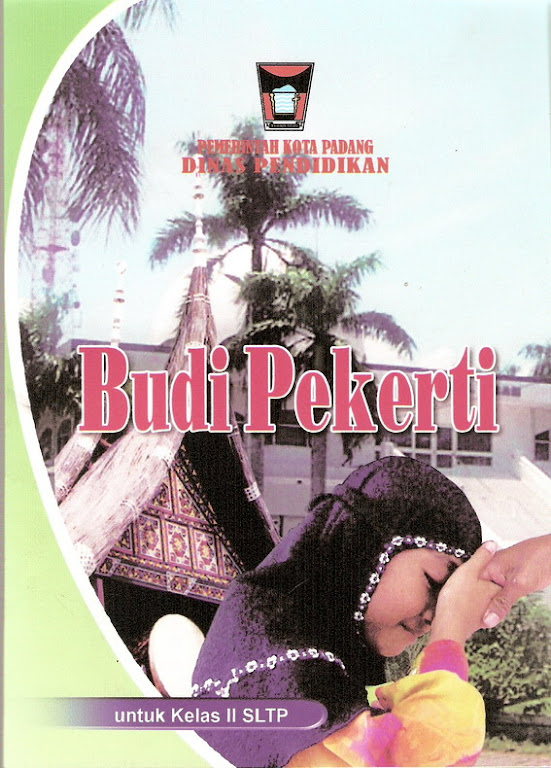



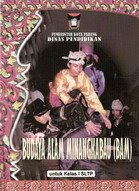





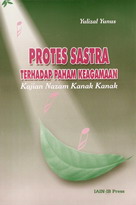
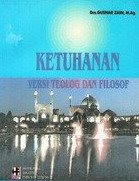




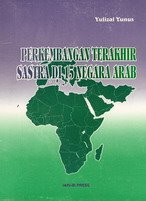











Tidak ada komentar:
Posting Komentar